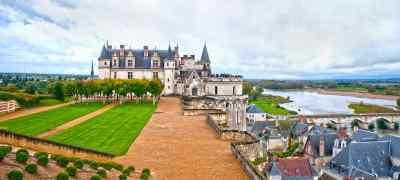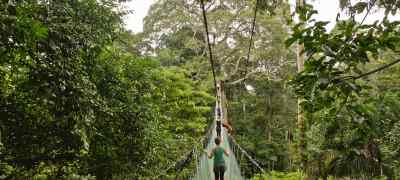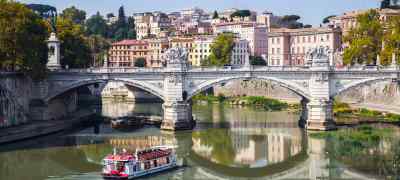By Soren Rivero
You’d be amazed by how much rich culture and history can be found all throughout Colombia. On top of that, the land is one of the most biologically diverse in the world. Combine these two together, and this country is a destination like none other for adventurous and curious travelers.
One of the best ways to appreciate the culture and history in Colombia is to visit some of the country’s UNESCO heritage sites — and this is your guide to all 9 in Colombia!
Historic Centre of Santa Cruz De Mompox
Founded in 1450 by the Governor of Cartagena, Juan De Santa Cruz, this historical landmark was used as both a port and trade center. One cool fact about this place is that the settlement was built atop a river whereas colonial Spanish settlements were usually built around pre-established town squares.
Santa Cruz de Mompox is divided into three sectors: San Francisco in the north, Plaza de Santa Bárbara to the south, and Plaza Central in the middle. It was declared a UNESCO Heritage Site in 1995 and remains a popular destination for tourism and cultural preservation.
San Agustín Archaeological Park
This park is located in San Agustin, Huila, surrounded by the Andes Mountains Range. San Agustin is the largest assemblage of religious monuments and megalithic sculptures in all of South America.
Here, you’ll see dozens of artwork that represent Gods and mythical creatures in a style that shows how uniquely creative the indigenous Andes populations were. It’s assumed that these beauties were crafted all the way back in the 1st through 8th centuries.
Coffee Cultural Landscape of Colombia
Because of how important coffee is to Colombian culture, the natives have adapted their farms to better suit the production of coffee.
The coffee cultural landscape of Colombia was made into a UNESCO Heritage Site in 2011. Most of the farms reside within the Northwestern mountainous regions of Colombia where visitors can see how the landscape has altered due to the coffee farming processes.
National Archeological Park of Tierradentro
The National Archeological Park of Tierradentro was made a UNESCO heritage site in 1995 after a few excavations of the surrounding area.
This park is well-known for its incredibly vast amount of hypogea (underground burial chambers) that date back way before Colombia was even established as a country, sometime between the 6th and 10th centuries. The park is divided into separate archaeological sites, all of which contain their own hypogeum which can go about 26ft deep into the ground. Patterns drawn in black and red can be found all over the wall, as well as pottery and woven fabric.
Malpelo Fauna and Flora Sanctuary
Malpelo Island is located 500km off of the Colombian coast and is one of the only isolated oceanic habitats in the world that remains completely undisturbed. The island is barren of terrestrial life and is very unlikely to be developed in the future due to the extreme amount of diverse marine life that inhabits the surrounding waters. In order to continue the preservation of marine life here, fishing is completely banned. One thing you can do, however, is diving. The sanctuary’s ample underwater caves and lack of pollution has actually made it one of the most popular diving spots in all of the Western hemisphere!
Some of the world’s most rare and critically endangered marine species are protected here. Such species include giant billfish, manta rays, and the extremely rare short-nosed ragged-tooth shark.
Qhapaq Ñan, Andean Road System
Also known as the Inca Road System, this highly extensive road is the largest of its kind in all of the Americas. The total distance of the road is a little less than 40,00km long. It’s not solely in Colombia though — it actually stretches through different parts of Argentina, Bolivia, Chile, Peru, and Ecuador.
One has to wonder how it’s been able to survive this long given it’s unique Incan engineering, not to mention that it was finished about 400 years ago. It became a UNESCO site in 2014 and is one of the more popular sites in South America.
Port, Fortresses and Group of Monuments, Cartagena
Located on a bay in the Caribbean Sea right off the northern coast of Colombia is the expansive city of Cartagena. The city shows off the architectural expertise used for Spanish military purposes during the 16th-18th centuries. The military forts were made a UNESCO site in 1984 and still remain preserved to this day, open to visitors.
Los Katíos National Park
Home to dozens of endemic plants and endangered species is Los Katios National Park, which extends over 720km across northern Colombia. So massive is this park that it shares the famous Darien Gap with neighboring country, Panama.
About 25% of the country’s entire bird population resides here. In 1994, it became a UNESCO site due to its immense area mass and extreme biodiversity.
Chiribiquete National Park
Also known as “The Maloca of the Jaguar”, this park is the most protected in Colombia as it's a confluence point of four biogeographical provinces. These include Orinoquia, Amazonia, the North Andes, and Guyana which are all guaranteed protection by the National Park.
Aside from the very unique landscape here (which include endemic species of plants and animals, as well as table top mountains), excavations have uncovered thousands of hand-drawn figures and pictures of dances, ceremonies, and hunting scenes painted sometime around 20,000 BCE. The indigenous tribes regard Chiribiquete as sacred which makes it closed off to visitors.













